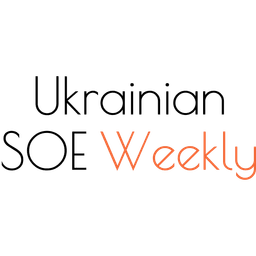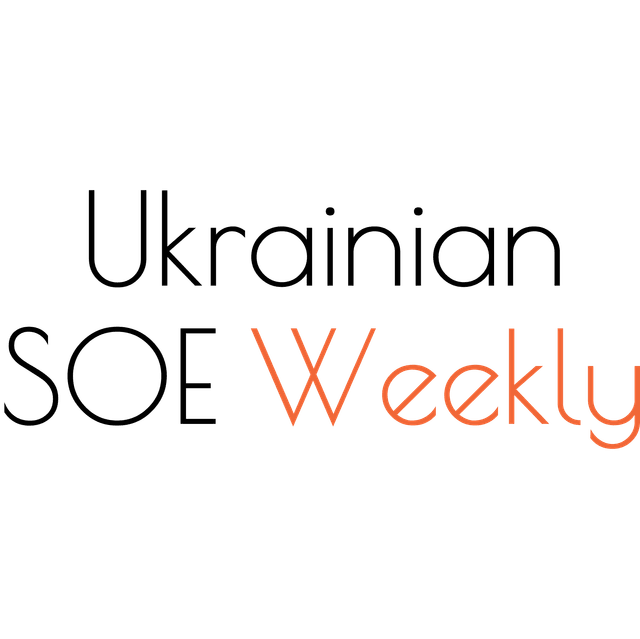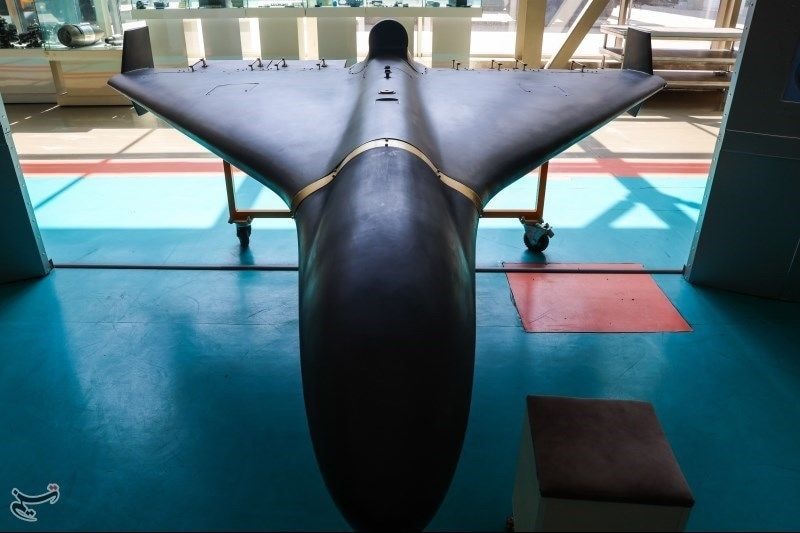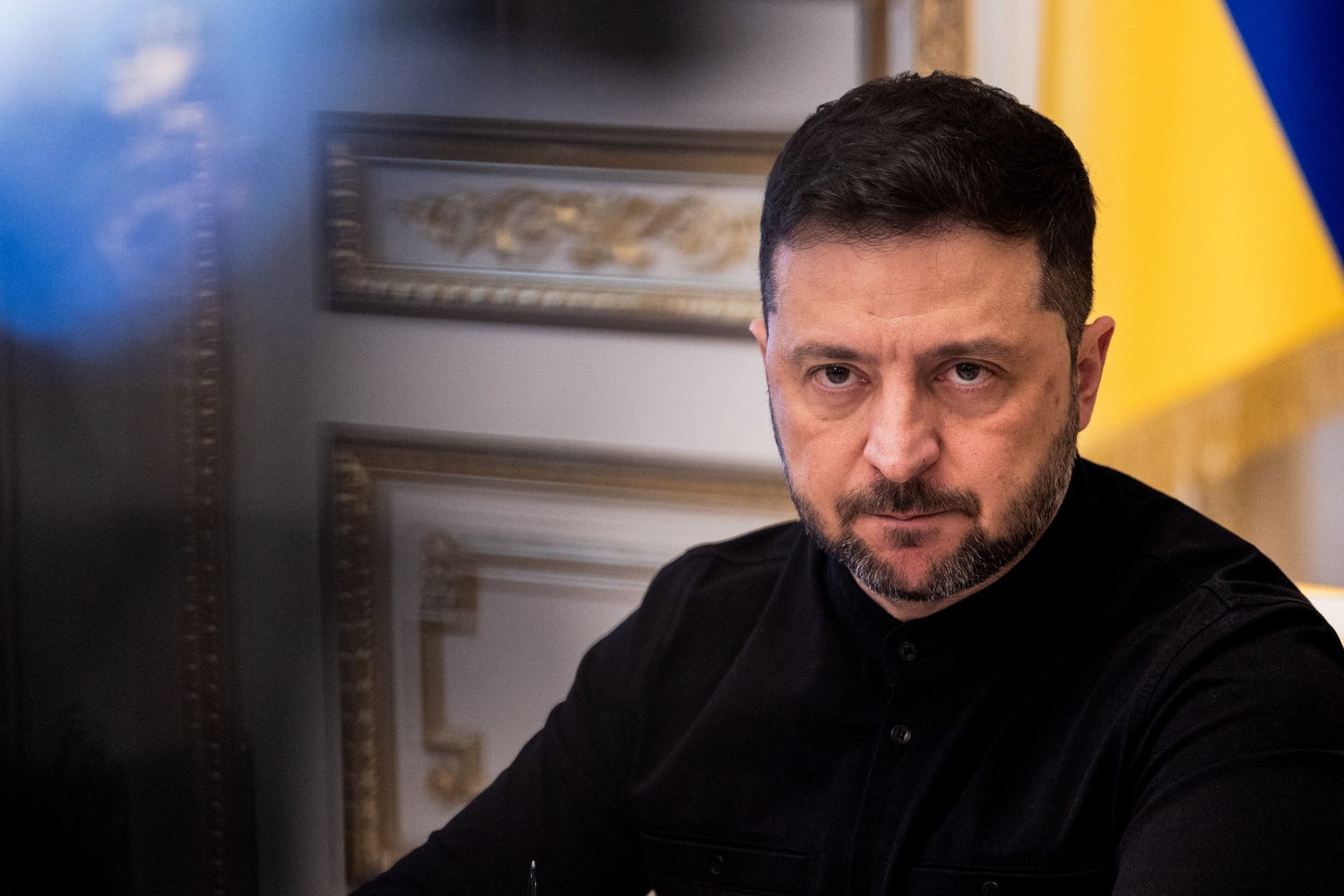Ukrainian State-Owned Enterprises Weekly – Issue 91

Editor’s Note: This is issue 91 of Ukrainian State-Owned Enterprises Weekly, covering events from June 3-8, 2023. The Kyiv Independent is reposting it with permission.
Ukrainian SOE Weekly is an independent weekly digest based on a compilation of the most important news related to state-owned enterprises (SOEs) and state-owned banks in Ukraine. This publication was produced with the financial support of the European Union within the project “Supporting Ukraine in rebuilding and recovery” implemented by the KSE Institute. The contents of this publication are the sole responsibility of the editorial team of the Ukrainian SOE Weekly and do not necessarily reflect the views of the European Union.
Corporate governance of SOEs
HACC rejects NABU’s motion to extend the pre-trial investigation of the Kobolyev case for the third time. On June 5, the law firm Miller, which represents former Naftogaz CEO Andriy Kobolyev, reported that the High Anti-Corruption Court (HACC) did not grant the National Anti-Corruption Bureau of Ukraine (NABU) detective’s motion to extend the pre-trial investigation in the case involving Kobolyev’s bonuses.
According to Miller, the prosecution’s motion requested a six-month extension to carry out a “number” of investigative actions.
In SOE Weekly (Issue 88), we reported that the HACC would consider NABU’s motion to extend the pre-trial investigation of the Kobolyev case again.
In Issue 83, we reported that the HACC dismissed the previous motion of the NABU detective to extend the pre-trial investigation against Kobolyev.
Shortly after the ruling, the Specialized Anti-Corruption Prosecutor’s Office (SAPO) said that the pre-trial investigation had been completed and its materials were available to the suspect (Kobolyev) and his defense (see Issue 83).
As we reported earlier, on Jan. 19, NABU and SAPO notified Kobolyev that he was suspected of misappropriating (illegally awarding himself) over Hr 229 million ($6.3 million) in 2018, which was part of the bonuses granted to Naftogaz’s team in May 2018 for the company’s historic victory against Russia’s Gazprom in Stockholm’s court of arbitration.
For an extended background on the Kobolyev case, see SOE Weekly’s Issues 71, 72, 73, 77, 78, 79, 83, 84, and 88.
For a detailed analysis of this case from a corporate governance perspective, see a series of columns by SOE Weekly team members Andriy Boytsun, Oleksandr Lysenko, and Dmytro Yablonovskyy: Are Kobolyev’s bonuses a threat to corporate governance reform? Part 1, Part 2, Part 3, and Part 4.
The state owns 3,256 SOEs at the central level. The Ukrainian state owned 3,256 companies as of Jan. 1. The SOE Weekly team has established this after consulting the updated Unified Registry of State-Owned Objects.
According to the same registry, there were 3,378 SOEs as of Jan. 1, 2022. This implies that their number declined by 122 SOEs, or 3.6% of the total SOE portfolio, during 2022. (Note that this number does not include at least 14,000 enterprises owned by local authorities, for which no reliable statistics are available.)
The SOE Weekly team analyzed the SOE list by the company name. Based on the names, at least 2,384 (73%) out of the 3,256 entities are registered as state unitary enterprises.
Note that the State Property Fund of Ukraine (SPFU), which maintains the Unified Registry, has only published the names of SOEs for the 2023 list, unlike the data disclosed for 2022, which included additional information such as the legal form, EDRPOU code, location, ownership entity, the main type of business activity, financials, and legal status.
The limitation of data published may be due to security reasons during wartime, particularly when it comes to disclosing the specific locations of SOEs. However, other indicators that do not include sensitive data could be published to enable public oversight of SOEs.
Non-standard legal forms for SOEs such as the state unitary enterprise are not in line with the OECD Guidelines on Corporate Governance of SOEs. Note that on Jan. 12, Draft Law No. 6013 was adopted in the first reading. In particular, the bill aims to facilitate the conversion of state enterprises into standard legal forms, such as joint-stock companies or limited liability companies. The proposed legislation sets a seven-year timeframe for the corporatization of all state enterprises.
In SOE Weekly (Issue 79), we reported that on March 14, the Cabinet of Ministers approved its Priority Action Plan for 2023. The plan includes further reform of SOEs, which involves reducing their number through privatization, liquidation, and reorganization. The government’s action plan and the SPFU’s Unified Registry provide no indication of plans for further privatization, liquidation, or state ownership of specific SOEs.
SOE Weekly editorial team members Andriy Boytsun and Dmytro Yablonovskyi authored the Privatization and Corporate Governance section of the report “Economic priorities in post-war Ukraine” by CASE Poland and CASE Ukraine. The report emphasizes the need for Ukraine to approve an updated state ownership policy at the parliamentary level, clearly outlining the rationale for state ownership of enterprises.
Boytsun and Yablonovskyi argue that it is crucial to complete the triage of SOEs, categorizing them into those to be privatized, liquidated, or owned by the state, based on the updated state ownership policy. There are currently no legislative initiatives to introduce a state ownership policy or public information on the triage process.
Banks
The share of NPLs in state-owned banks grows to 53%. The National Bank of Ukraine reported that the non-performing loans (NPLs) at state-owned banks accounted for as much as 53% of their total loan portfolio as of May 1. Note that the share of NPLs in private banks was 22%.
The share of NPLs in state-owned banks was 46% as of Feb. 1, 2022. It has grown to 53% as of May 1, 2023, in tandem with the Russian invasion. However, PrivatBank’s NPL share fell by 1 percentage point, from 68% to 67%, during the same period. The other state-owned banks – including Ukreximbank, Oschadbank, and Ukrgasbank – saw a sharp increase in NPLs by more than 15 percentage points, reaching 43% from an initial 27%.
The increase in the share of NPLs at state-owned banks other than PrivatBank is primarily attributed to the growth in the NPL share denominated in foreign currency, rising by 24 percentage points, from 23% to 47%. This increase is likely due to the significant devaluation of the hryvnia against the U.S. dollar, with the official exchange rate changing from 28.4 UAH/USD in February 2022 to 36.6 UAH/USD in May 2023.
This discrepancy may also be due to PrivatBank’s focus on retail banking after nationalization, which was less affected by Russia’s large-scale aggression, while the other banks had substantial corporate loan portfolios, including loans to state-owned enterprises. Note that we require additional data to test this hypothesis.
Note also that we should anticipate a further increase in the share of NPLs in state-owned banks following the nationalization of Sense Bank (previously Alpha-Bank).
Energy
Ukrhydroenergo reports on the destruction of Kakhovka HPP, which was blown up by Russian forces. On June 6, Ukrhydroenergo reported that the Kakhovka Hydroelectric Power Plant (Kakhovka HPP) was destroyed beyond restoration after the Russians set off a massive explosion in the engine room. State-owned Ukrhydroenergo holds the assets of the Kakhovka HPP.
According to the Ministry of Energy’s June 6 report, the ensuing flood threatened to drown energy facilities in Kherson Oblast, including the Kherson Combined Heat and Power Plant.
The explosion of the Kakhovka HPP could have negative consequences for the operation of Europe’s largest nuclear power plant, Zaporizhzhia NPP, which is currently under Russian occupation. The water from the Kakhovka reservoir is needed to provide the Zaporizhzhia NPP with water to cool turbine condensers and safety systems, the European Pravda explained.
On June 6, the International Atomic Energy Agency (IAEA) said that its experts were “closely monitoring the situation”, and that there was no “immediate risk to nuclear safety” at the Zaporizhzhia NPP after the destruction of the Kakhovka HPP.
IAEA Director General Rafael Grossi said that at the current rate of decline in the level of the Kakhovka reservoir, water to feed turbine condensers and safety systems at the Zaporizhzhia NPP would last for several days, but there are alternative water sources that could last for months unless these are destroyed.
State-owned nuclear energy company Energoatom, which holds the assets of the Zaporizhzhia NPP, also said that the situation at the plant remains under control.
The Kakhovka HPP itself is completely destroyed. Ukrhydroenergo’s CEO Ihor Syrota said that the only option is to build a new facility from scratch in its place. According to him, after the de-occupation of the Ukrainian territories, Ukrhydroenergo will build a new power plant. This would take at least five years, Syrota said.
He also noted that the Kakhovka reservoir would be refilled as soon as possible after de-occupation.
The construction of a new HPP could cost about $1 billion, the Ministry of Economy said.
According to preliminary estimates by the Ministry of the Environment and the State Environmental Inspectorate, water resources have been damaged by an equivalent of Hr 2 billion ($54.7 million), and this amount will only grow.
The consequences of the explosion could also have a negative effect on agriculture in the southern regions of Ukraine: According to the Ministry of Agrarian Policy, the water spill flooded approximately 10,000 hectares of agricultural land on the west bank of the Dnipro River in Kherson Oblast. On the (currently occupied) east bank, this area is several times larger.
It will also hurt the region’s ecology and has forced the authorities to evacuate people from the flooded areas.
Water supply problems were observed in some towns of Dnipropetrovsk Oblast.
Health issues are also possible. According to the Ministry of Health, water in the flooded areas may soon become unusable.
On June 7, the Ministry of Energy reported that due to the explosion and the resulting flood, 20,000 consumers in Kherson Oblast were without electricity – 129 transformer substations in Kherson and two solar plants in Mykolaiv region were flooded.
According to Ukrenergo, it is working together with Ukrhydroenergo on scenarios to balance Ukraine’s power system after the loss of the power plant. The operation mode of hydroelectric power plants is being changed to reduce the volume of water entering the Kakhovka reservoir to reduce flooding.
Currently, electricity generation is sufficient to meet the needs of consumers, Ukrenergo added.
The Cabinet determines how much gas should be in storage before the start of the heating season. On May 22, Prime Minister Denys Shmyhal reported that Ukraine should have more than 14 billion cubic metres of gas in its storage facilities by the beginning of the next heating season (usually mid-October).
According to Shmyhal, Ukraine aims to minimize gas imports by increasing domestic production.
According to Naftogaz, during the previous heating season, from Oct. 7, 2022, to mid-April 2023, 5.6 billion cubic meters of gas were withdrawn from storage. In April 2023, gas storage operator Ukrtransgaz, a Naftogaz company, started injecting gas into underground storage facilities.
According to the Ministry of Energy, as of the morning of June 7, gas reserves exceeded 9.7 billion cubic meters.
In SOE Weekly (Issue 69), we reported on the resignation of Naftogaz’s previous CEO Yuriy Vitrenko.
According to Ekonomichna Pravda (EP), Vitrenko resigned because of his differences in opinion and tensions with Prime Minister Denys Shmyhal, particularly about the reform priorities for Naftogaz, the Cabinet’s requirement that the company should defer payments on Eurobonds leading to the default of Naftogaz, and gas volumes required for the winter of 2022-2023.
EP wrote that the conflict between Shmyhal and Vitrenko arose amid disagreements over the amount of gas needed in underground storage facilities before the start of the heating season.
In June 2022, the Cabinet of Ministers instructed Naftogaz to accumulate 19 billion cubic meters by the start of the heating season, while Vitrenko argued that 15 billion would be enough to get through the winter.
On Oct. 20, 2022, the stocks in the storage facilities amounted to about 14.2 billion, EP added.
Defense
Ukroboronprom and Czech company VOP CZ to jointly repair Ukrainian T-64 tanks. On June 6, Ukroboronprom reported that it had signed a contract with the Czech state-owned defense company VOP CZ for the joint repair of T-64 tanks for the Security and Defense Forces of Ukraine.
According to the company, the repairs would be carried out in Nový Jičín under the technical supervision of Ukroboronprom specialists.
VOP CZ employees have already visited Ukroboronprom enterprises to establish cooperation, Ukroboronprom said.
According to Ukroboronprom’s CEO Yuriy Husyev, this is part of a deal to establish a joint defense cluster with the Czech Republic, which Ukroboronprom and the Intergovernmental Defense Co-operation Agency (AMOS) signed in November 2022.
The cooperation envisages the production of military equipment, increased production of ammunition of various calibers (both at existing facilities and at newly created ones in safe locations), development of service hubs for maintenance and repair of equipment, as well as cooperation in the field of high-tech, including the establishment of joint research centers.
VOP CZ is an enterprise fully owned by the Ministry of Defense of the Czech Republic. It specializes in military technology, machine production, and development.
According to the company’s website, it is a leading Czech manufacturer and provider of repairs, modernization, and servicing in the field of defense and security.
The company has its own development center with competitive projects utilized by the Czech Armed Forces, security units, and the civil sector.
In SOE Weekly (Issue 88), we reported that Ukroboronprom signed an agreement with the German company Rheinmetall, one of the world leaders in the defense industry, to set up a joint venture to repair tanks in Ukraine.
In Issue 74, we reported that Ukroboronprom announced that it had begun producing 120-mm mortar shells jointly with an undisclosed NATO member state. According to the company, the 120-mm mortar shell was the first product to be jointly produced by Ukraine and a NATO member state. Recently, Ukroboronprom signed a contract with Ukraine’s Defense Ministry for the supply of these munitions.
In Issue 79, we reported that Ukroboronprom had begun producing 125-mm shells for tanks jointly with a NATO member state. The first batch of 125-mm shells for T-64, T-72, and T-80 tanks, which are used by the Armed Forces of Ukraine, has already been delivered, according to Ukroboronprom.
In Issue 80, we reported that Ukroboronprom announced that it shipped the first batch of domestic 122 mm shells to the Armed Forces, which it had produced abroad.
Infrastructure
Ukrzaliznytsia to receive a 6.7 million euro grant from the EIB. On June 2, Ukrzaliznytsia reported that it had signed a 6.7 million euro grant agreement with the European Investment Bank (EIB) to support the company’s operations during Russia’s full-scale war against Ukraine.
This EU’s grant was originally earmarked for the improvement and electrification of part of the Ukrainian railway system. The needs changed with the war, Ukrzaliznytsia said. Following a decision by the European Commission, the original grant was re-purposed as urgent emergency support to Ukrzaliznytsia to ensure the continuation of the railway’s operations and meet the urgent needs of passengers and humanitarian aid, the company explained.
In SOE Weekly (Issue 90), we reported that Ukrzaliznytsia would receive a $25 million grant from the World Bank.
In Issue 88, we reported that the European Bank for Reconstruction and Development (EBRD) would provide 200 million euro (apparently, as a loan) to rebuild Ukraine’s railways.
In Issue 72, we reported that Ukrzaliznytsia took losses of Hr 10.8 billion ($295 million) in 2022. The loss from passenger transportation was Hr 13.3 billion, or $ 364 million(suggesting that the company’s other segments, such as cargo transportation, made a profit of 2.5 billion).
Ukrzaliznytsia was also expected to lose Hr 20.2 billion ($552 million) in 2023 due to the large social burden and restrictions on cargo transportation.
In Issue 68, we reported that after Russia’s full-scale invasion, the Ukrainian government gave Ukrzaliznytsia new responsibilities. We also detailed the financial support that the government, Ukrgasbank, and international partners provided to Ukrzaliznytsia throughout 2022.
Confiscation of the aggressor state’s assets, nationalization, and asset seizure
The Verkhovna Rada passed a law allowing the nationalization of Sense Bank, owned by sanctioned oligarchs Mikhail Fridman and Petr Aven. On May 29, the Verkhovna Rada adopted Draft Law No. 9107-1, which allows the National Bank of Ukraine (NBU) to nationalize banks of sanctioned owners – this applies to the last major Russian bank in Ukraine, Sense Bank (which had operated under the name Alfa-Bank until Dec. 1, 2022).
According to EP, after the start of the full-scale war, Western banks refused to transfer funds to the accounts of companies in Alfa-Bank because of the threat of sanctions, even though the Ukrainian institution has never been on the sanction lists.
The authorities’ attitude toward the bank has also changed during the war. A year ago, there was a consensus to maintain the status quo about Alfa-Bank until the war ended. However, in autumn 2022, the highest government offices showed the political will to nationalize the assets of Russian oligarchs in Ukraine, EP added.
The bank’s co-owner Fridman resisted this in every way possible. He tried to agree on a $1 billion injection into the bank to preserve this asset. However, the talks about additional capitalization failed, the media reported.
As usual, the law will enter into force after it is signed by the president. The NBU will then be obliged to withdraw Sense Bank from the market and begin its nationalization. This would involve the NBU, the Deposit Guarantee Fund of Ukraine (DGF), the Cabinet of Ministers, the Ministry of Finance, and the National Depository of Ukraine (NDU), EP explained.
According to EP, the clients of Sense Bank should not be impacted by the nationalization.
Sense Bank would become the fifth bank owned by the state (after PrivatBank, Oschadbank, Ukreximbank, and Ukrgasbank). After its nationalization, the state’s share in the Ukrainian banking system’s assets would increase from 53.15% to 56.64%.
According to EP, Sense Bank is the 10th largest in the country, with assets of Hr 97.65 billion ($2.7 billion). Before the full-scale war, the institution’s assets exceeded Hr 120 billion ($3.3 billion), but have been gradually declining since then.
The bank has a large portfolio of corporate loans worth Hr 27.63 billion ($755 million). Individuals owe the bank Hr 11.72 billion ($320 million).










